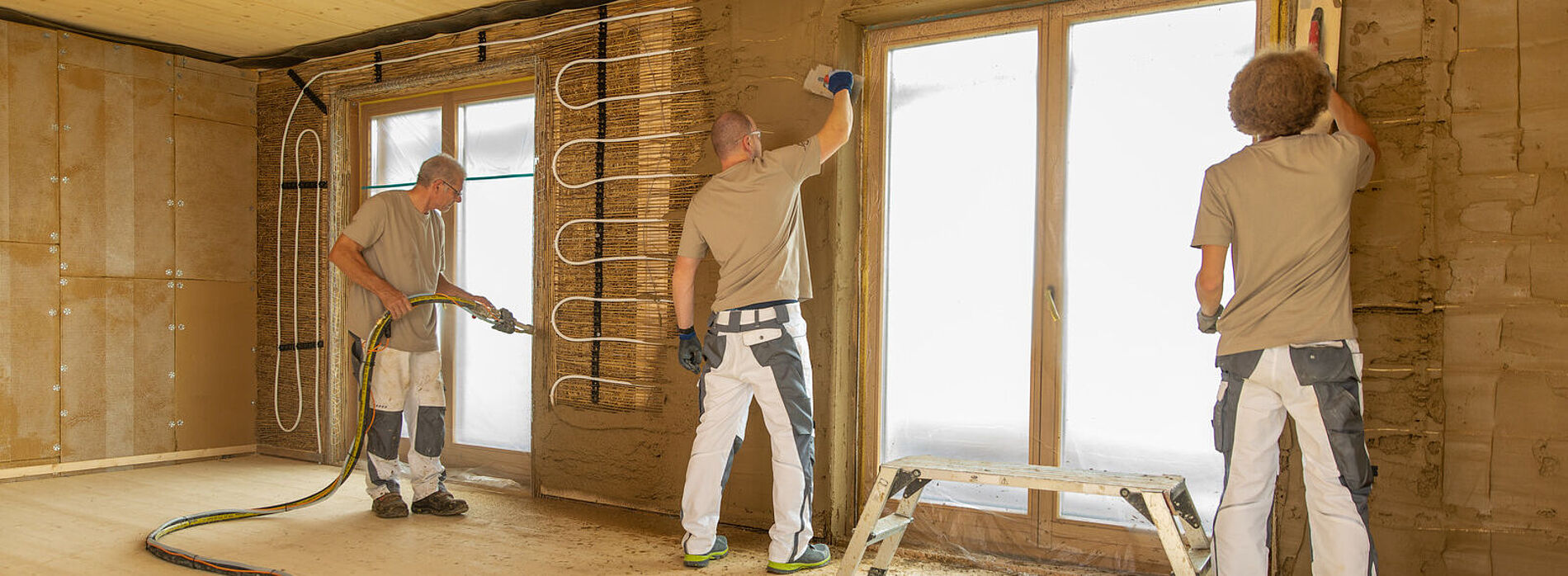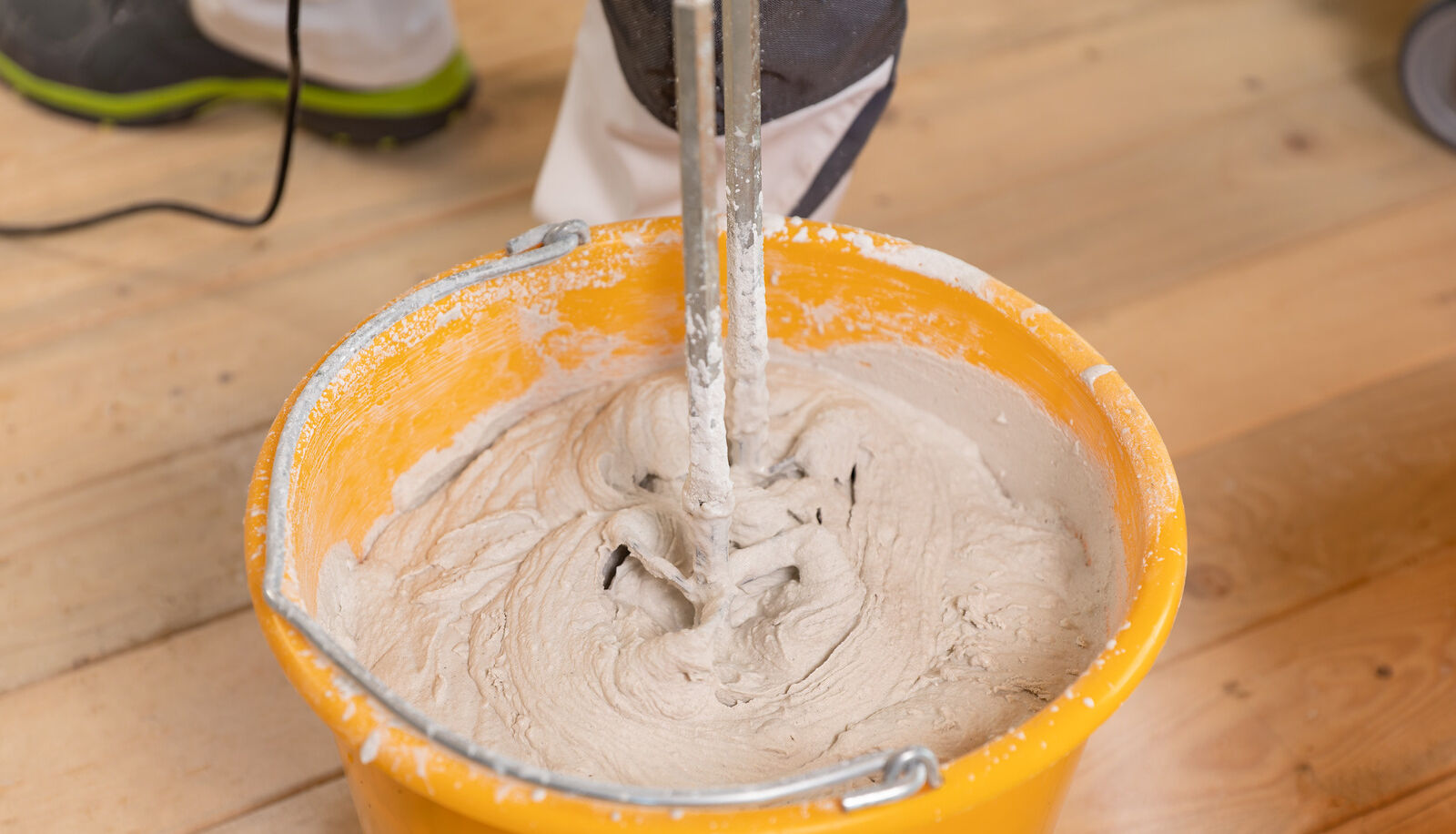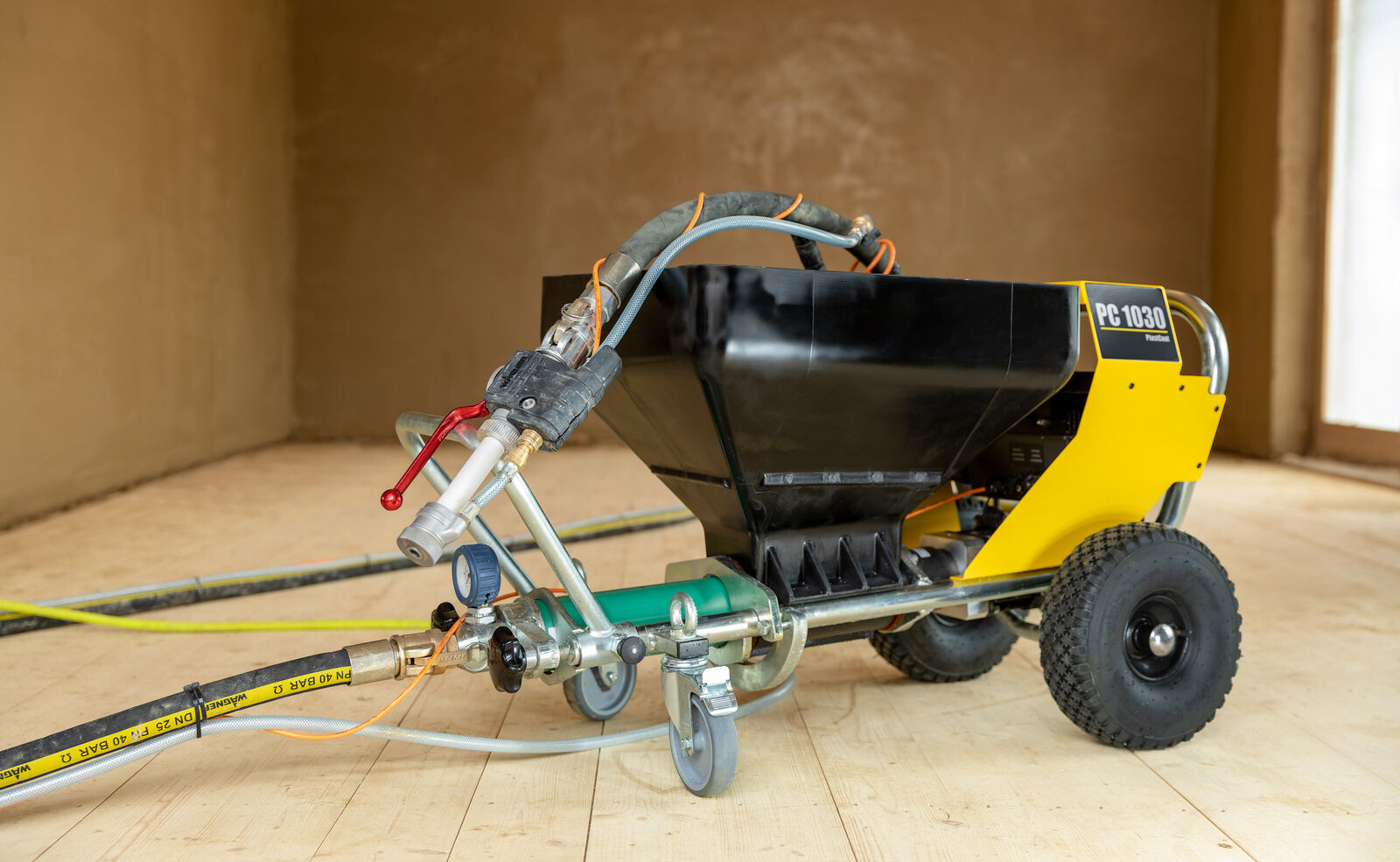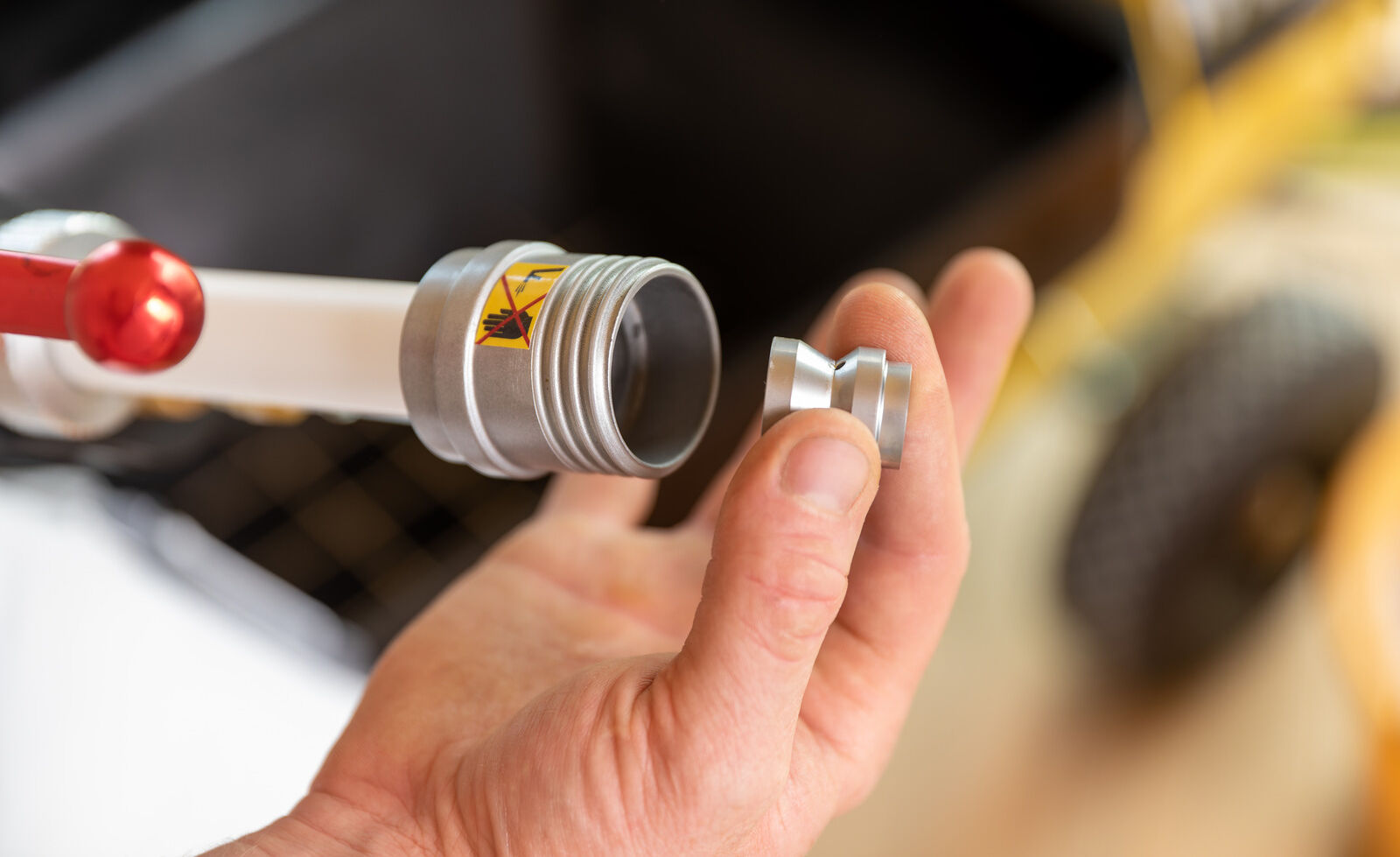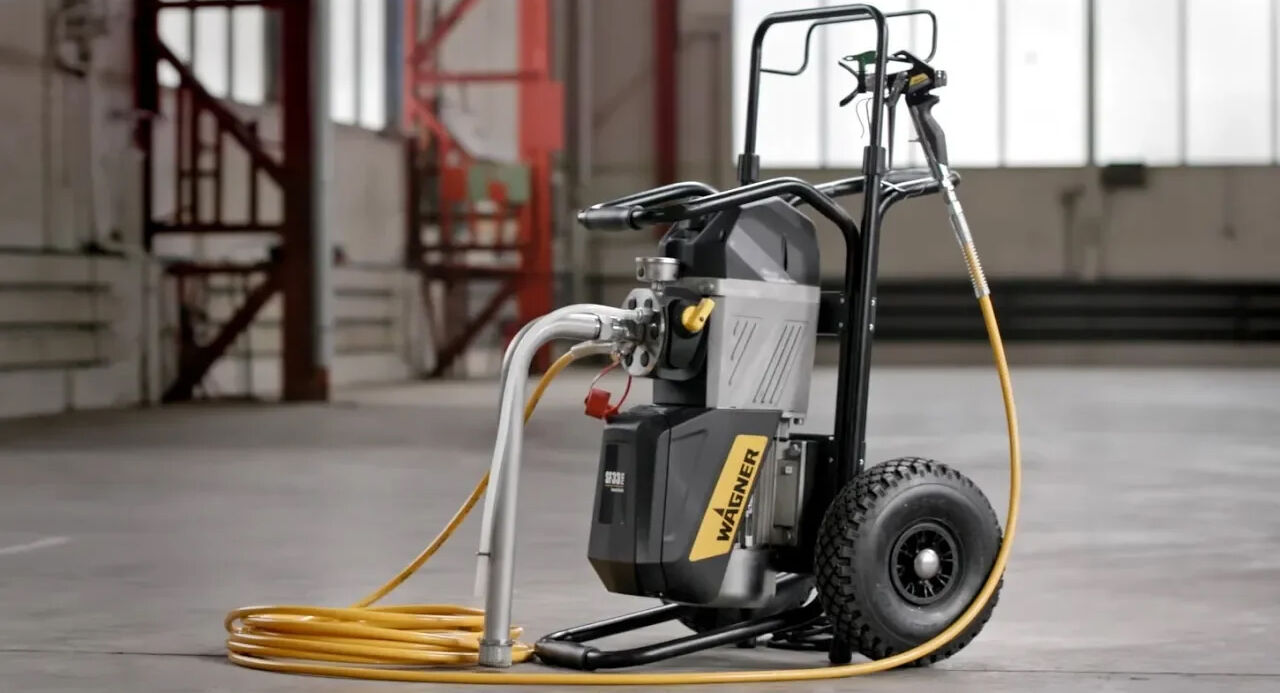Spray clay plaster
Clay plaster has many advantages as a material: It regulates the humidity in the room, absorbs pollutants and contains no artificial additives. If you spray clay plaster, it saves a lot of time and is easier to apply. We show you all the steps for spraying clay plaster with the WAGNER screw pump PlastCoat 1030.

